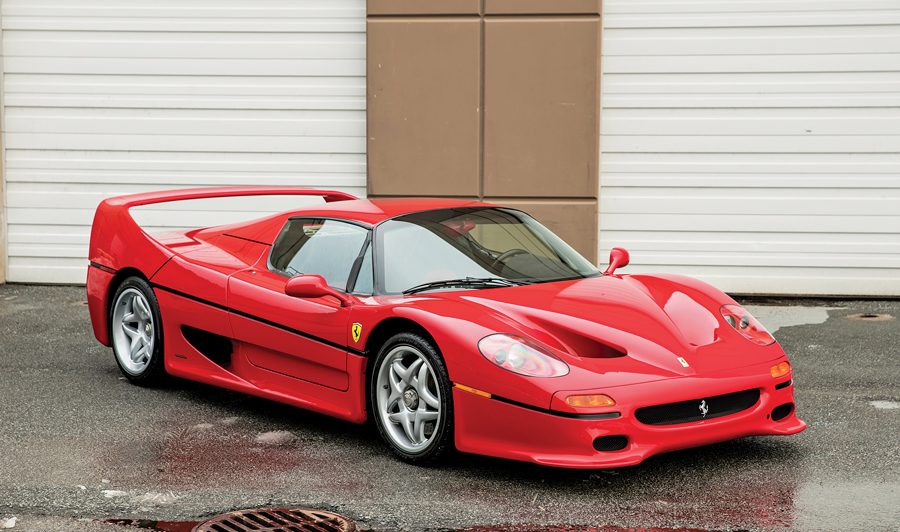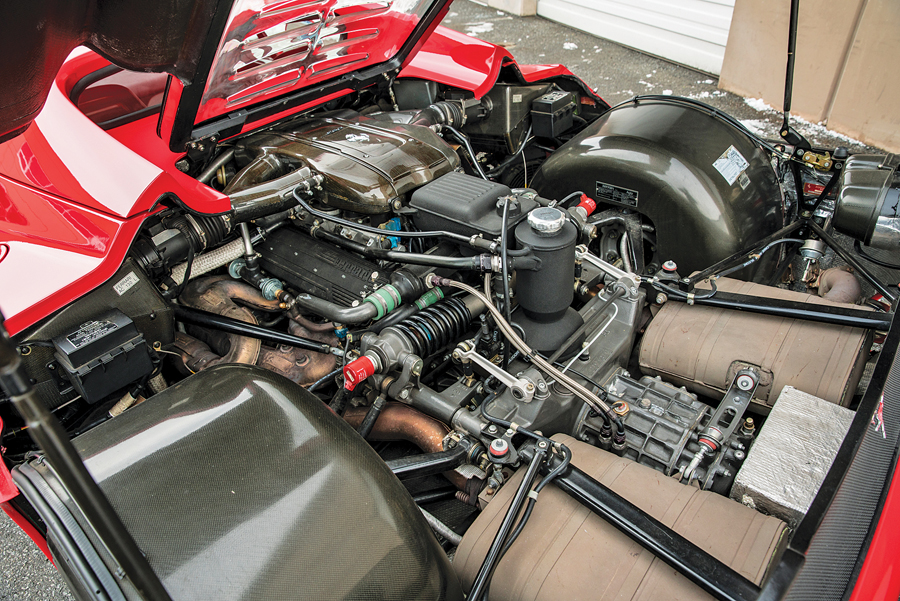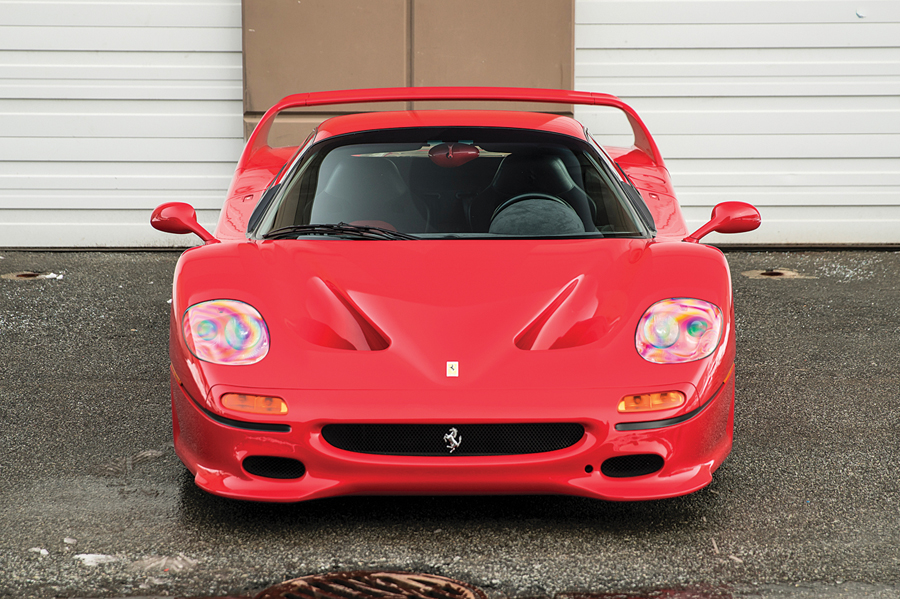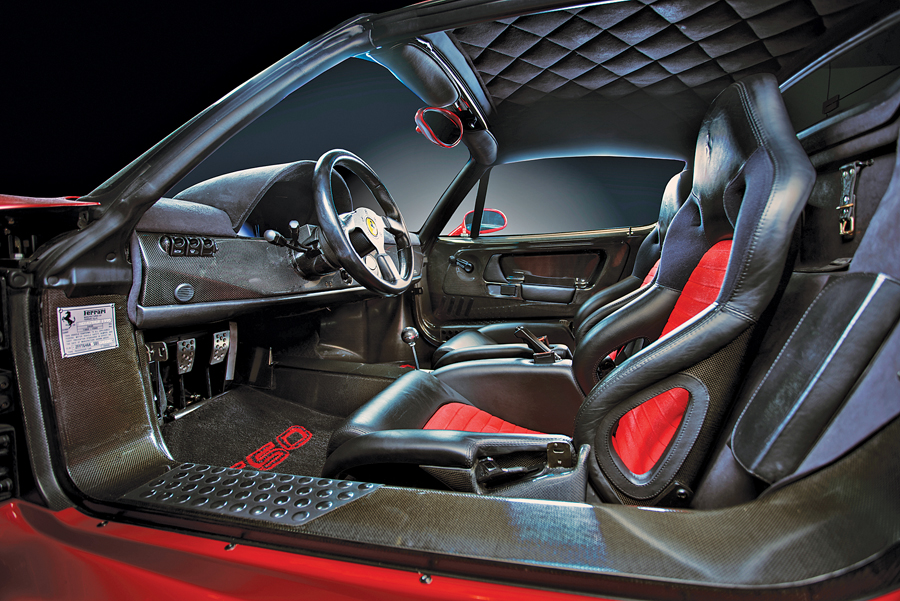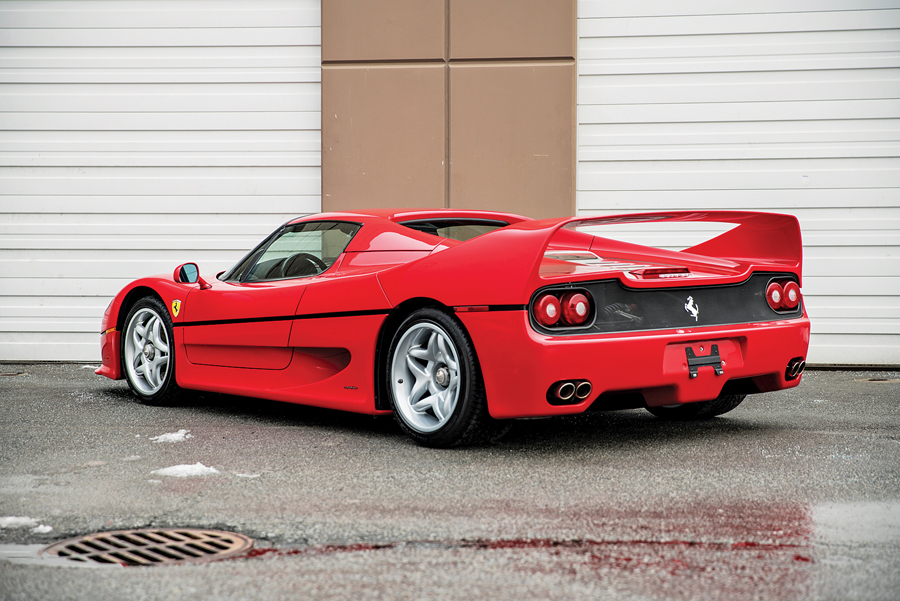SCM Analysis
Detailing
| Vehicle: | 1995 Ferrari F50 |
| Years Produced: | 1995–97 |
| Number Produced: | 349 |
| Original List Price: | $475,000 |
| SCM Valuation: | $1,688,100 |
| Tune Up Cost: | $6,000 |
| Chassis Number Location: | On bulkhead in front compartment |
| Engine Number Location: | Front left side of the block |
| Club Info: | Ferrari Club of America |
| Website: | http://www.FerrariClubofAmerica.org |
| Alternatives: | 1984–85 Ferrari 288 GTO, 1988–91 Ferrari F40, 2002–03 Ferrari Enzo |
| Investment Grade: | A |
This car, Lot 218, sold for $2,640,000, including buyer’s premium, at RM Sotheby’s Amelia Island, FL, auction on March 11, 2017.
Ferrari’s concept for the F50 was to build a production car that was closer to being a Formula One car than anything produced before.
That meant starting with a carbon-fiber tub, mating it to the most powerful V12 engine ever put in a Ferrari production car, and adding no-compromise brakes, a competition-bushed push-pull suspension and an open top to enhance the experience.
Pininfarina was called in to fashion a body built in lightweight composite and finished to a high quality.
My friend is currently looking for an F50. I asked him why he wanted the model, and his reply matched what I expected. The first item mentioned was racing heritage. That’s an interesting answer for a car that wasn’t raced prior to production, but I suspect that it has something to do with the V12 engine that is based on Ferrari’s 1990 641 Formula One V12 engine.
The next answer didn’t come as a surprise. He wanted the last Ferrari supercar with a manual transmission.
The open top was pretty high on the list. Next came the answer I was waiting for. This buyer is building a Ferrari supercar collection. He already had a 288 GTO and thought he’d work on an F50 next.
A key part of a Ferrari supercar collection
It is surprising how many Ferrari supercar collections there are around the world. I call them full houses — as in the poker hand. Some of these elite owners are Ferrari’s best customers — those who get most every new Ferrari. These guys didn’t set out to make a supercar collection; they just didn’t sell any of their cars and have the collection by default.
Other supercar collections were assembled after the owner had a couple of the models and decided to fill out the hand. A third group consciously decides to build the collection and sets out on a mission to collect the full set.
The collection is not easy to assemble.
The market for Ferrari supercars is worldwide. Hong Kong real estate moguls, Saudi princes and Australian mineral barons have the same appetite for supercars as Silicon Valley tech stars.
Each market puts pressure on the factory for cars to come to their territory. The result? Supercars are rather elusive. With just 272 cars produced, the 288 GTO is the rarest of the group. A total of 1,311 F40s were built, which seems like a lot — until you try to buy one. Enzo and LaFerrari production come in around 400 each. The official F50 count is 349 — with a couple more supposedly built that aren’t on the official tally.
The merciless secondary market
Unless you are a favored Ferrari customer and get a car when they are produced, supercar collectors are at the mercy of the secondary market — a place not known for mercy.
Collections are seldom broken up, so only a few cars are ever on the market. Some second-string cars with higher mileage, multiple ownership and maybe a little drama in their past show up with lower prices, but the best examples are going to be expensive.
Ferrari built only about 55 U.S.-market F50s. That’s about one F50 per dealer — with a demand for many more. The F50s were allocated to the dealers’ best customers through a vetting procedure.
They were sold at list price and were worth much more. If you were lucky enough to get one, Ferrari made it clear that reselling it would knock you off the list for the next supercar — unless it went back to your selling dealer.
Iron Mike, Montana and dealers
Our subject F50 has an interesting history. Somehow it got past Ferrari’s vetting procedure and got into the hands of an infamous California high-end exotic dealer. The dealer sold it to ex-heavyweight champion Mike Tyson. Iron Mike kept it several years — and racked up more than half the mileage before passing it to the next owner. It then passed through a second owner and another dealer before transferring to Montana corporate ownership.
F50s came with a lot of toys. There were two large crates — sometimes called circus boxes — to store the top and various accessories. The car also came with books, tools, luggage, build book and driving shoes in the owner’s size. This car was represented as having the crates, tools and owner’s manuals as well as Ferrari Classiche certification.
This was the second F50 that RM Sotheby’s sold this year. The first was a 2,900-mile black example, which sold in Arizona in January. It sold for $3,135,000. That exceptional result can be partially attributed to the rare black color and the low mileage.
Our subject car sold for much less, but it was a couple of hundred thousand dollars more than F50s sold for last year.
Modern Ferraris have cooled a bit, as high prices have brought more cars to market. The exception is supercars, where limited supply and well-heeled owners have kept prices high.
This car had enough miles that the owner could put on a bit more without fear of hurting its value. It was in great condition, with most of its toys. The price was a little high — but fair. It’s hard to buy an F50 for less than the last one sold for.
Taking that thought to heart, the car is currently being offered by a dealer for about a million dollars more than it sold for at Amelia Island. Apparently, the buyer is going for the score of a lifetime. Bless him for trying, but he’s way ahead of the market. ♦
(Introductory description courtesy of RM Sotheby’s.)
